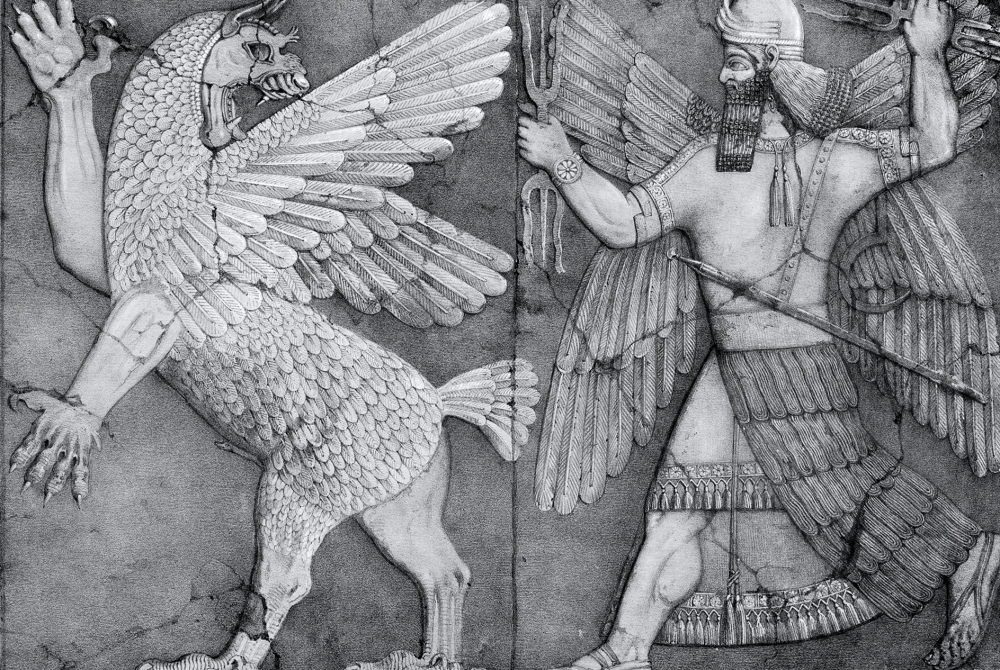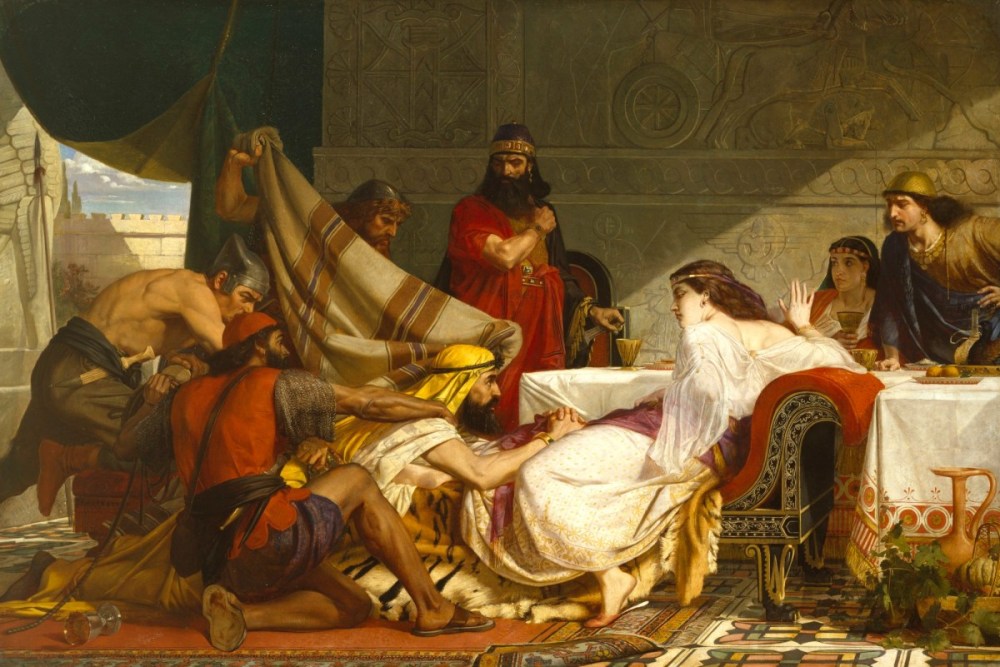Biblical Queen Esther, wife of Xerxes,we will remember, is a figure who succeeds in convincing the Persian King Ahasuerus to kill Haman, an important parabolic rival of the Jews. Haman had desired, it is reported in The Book of Esther, to eliminate the Jews in Persia.
Importantly, both Queen Esther and Mordecai, the Jew who influences Esther to intercede on behalf of the Jews against Haman, are Benjamites. This, at least prior to the ascendency of King David, would indicate them as Aryan. The JEM we will study will illuminate these hitherto unknown or ignored esoteric facts.
However, this episode with Esther and Mordecai is supposed to have happened after the period of the Kings when theoretically the tribes of Benjamin and Judah had combined. Nevertheless, it should be considered significant that these largely parabolic, likely entirely mythical figures are indicated as Benjamite. More illuminating though is the etymology of Esther and her Hebrew name Hadassah. She is given both names in the Book of Esther.
Esther’s Hebrew name Hadassah, הֲדַסָּה, means “myrtle.” It comes from hadas, הֲדַס, meaning “myrtle tree.” It derives from or shares an origin with the Hebrew word Hadom, הֲדֹם, which means “footstool.” This may be meaningful as Hadom, appearing half a dozen times in the Hebrew Bible, is used there exclusively in the metaphorical sense. There, for example, enemies and even obsequious subjects of Yahweh are described as footstools. In other words, there may be a word play here suggesting Esther as a footstool of Yahweh or Jewish interests more generally. There can be no doubt, in any case, she is understood as an instrument or means in the service of a Jewish God.
It is generally concurred that the name Esther, אַסתֵר, is derived from the goddess Ishtar. Both names, Hadassah and Esther, would link this figure to the Aryan Goddess Venus. Ishtar is a synonymous Goddess in the Mesopotamian pantheon also represented by the planet Venus and the myrtle tree was sacred to Venus. Indeed, in some versions of the Adonis story, the myrtle tree replaces the myrrh tree. This is the tree into which Cyprian princess Myrrha was turned and from which the God Adonis was born.

It’s likely, however, Myrrha is simply a cover name or symbolic synonym of Venus, even if Venus also appears in the myth as Adonis’ lover. After all, some versions of the myth have Venus engineering the incestuous liaison between Myrrha and her father, that results in Adonis’ birth, whilst some, more directly, indicate Venus as both mother and lover of Adonis.
This nomenclature, indicating Esther as Aryan, would follow a pattern of “God Masking,” or esoterically identifying characters as deities, especially as ethnic identifiers, which we see in JEM, both ancient and contemporary. Esther striking beauty too, which allows her to marry the king, a trait in JEM typically indicating Aryans, is another clue. There she is described by the word Japheth יָפֶה/יפת. Japheth, again, means “beautiful” and is also the name of the Aryan forbearer and son of Noah, Japheth.
Mordecai, on the other hand, appears linked to the Babylonian God, Marduk, a descendent of the Aryan Enki and “Damkina.” Damkina is likely a title of the Semitic Mountain Goddess Ninhursag with whom Enki was typically paired. Hence likely the initially Aryan Benjamites are indicated in The Book of Esther as being comprised of both Aryan and Jewish elements at this point.
There are suggestive things here. Mordecai is understood as having taken his cousin, the orphan Esther, under “his protection.” Likewise, Esther is the daughter of Mordecai’s uncle. However this does not guarantee that she is a Jew, at least by birth. Likewise these familial relationships might be understood parabolically. Similarly Rachel, son of Laban (“White”), is also the “cousin” of a Jewish or proto-Jewish figure that she will marry. That figure is Jacob. This study makes clear that the beautiful Rachel is not a Jew while Jacob may be understood as a Proto-Jew. Indeed, as discussed, even Jacob’s twin brother Esau is understood as racially or ethnically distinct.
More, the word used for uncle here is dod, דּוֹד, a word that more commonly translates as “beloved.” Hence it could even indicate that Esther is the daughter of a former lover. There is curiously no mention of Mordecai’s wife in the parable so presumably Mordecai’s a bachelor traveling alone with the beautiful Esther who is evidently a nubile young woman. The word used to explain that he had “taken” her as his own daughter is laqach, לָקַח. It is a word commonly translated as “take” or “took.”

However it does appear in the Hebrew Bible as a reference specifically to marriage in a minority of cases, meaning “married,” “marries” or “marry.” It also appears in a minority of cases as a reference to purchasing, meaning “buy” or “bought.” Likewise it appears in a minority of cases as a reference to capturing, meaning “seize,” “seized,” “capture,” “captured” or “caught.”
Likewise, while is true that it is said Mordecai takes her as his daughter, the word for daughter here, bath, בַּת, is also used in the Hebrew Bible as a reference to women more generally, as in “daughters of Edom” or “daughters of Zion.” The following passage in Genesis exemplifies it: “Now when men began to multiply on the face of the earth and daughters were born to them, the sons of God (Elohim) saw that the daughters of men were beautiful, and they took as wives whomever they chose.” It’s also a word used, interestingly, for “towns” or “villages,” which itself may be suggestive of a Bride Gathering mentality from an itinerant Jewish perspective.
But certainly, even if it is used here to mean daughter, in the classic sense of that word, arguably this only amplifies an untoward suggestion. We have ample precedent for suspicion as well. The parables of Elisha, Elijah and Jonah make similar if clearer suggestions, this study argues, where the sons of widows appear to be molested by holy men, weaning them into an Abrahamic priesthood. As with these figures, it may be suggested in The Book of Esther, that a sexual relationship, particularly with young impressionable persons, weans invincible loyalty. Though we shudder at the thought: one never forgets their first love.
Indeed, while Esther serves as the queen of king Ahasuerus, she nevertheless: “obeyed Mordecai’s command, as she had done under his care.” The word for “under his care” here, omnah, אָמְנָה, is obscure, appearing only once in the Book of Esther. It is related to the equally obscure word in Kings, omnah, אֹמְנָה, meaning “pillar,” which also appears only once. Both come from aman, אָמַן, meaning “to confirm” or “support.” Speculatively there is an innuendo here but this is far from clear.

Mordecai, as Esther’s “guardian” and perhaps lover, presents Esther to the King who is searching for a new bride. Later Mordecai, ostensibly for revealing a plot against the king, becomes chief minister. In other words, it seems Esther was used in some sense as barter to curry favor with the potentate. This desire to curry favor with native kings we see throughout Jewish history, oft remarked upon by Andrew Joyce, where Jews establish “vertical channels” to ruling power, rather than through some natural relationship to common native populations.
We will also see it repeated in the JEM especially with the figure of Samuel, “the kingmaker,” who succeeds in currying the favor of the Aryan King Saul, “a candidate with promise.” Thus Esther even may represent a “Judaized” Aryan groomed toward Jewish interests. Given the reputation of Ishtar, from whom Esther’s name is likely derived, perhaps she is understood esoterically as a prostitute. Esther will eventually identify herself as a Jew to prevent Xerxes from pursuing a policy against the Jews.
Mordecai is also not above threatening Esther once she is ensconced in the royal palace with the king, to make certain that she carries out his bidding and the bidding of the Jews more generally. After Haman has issued an edict calling for the elimination of the Jews in the kingdom, Mordacaei, sounding like a mafioso, tells Eshter: “Do not imagine that because you are in the king’s palace you alone will escape the fate of all the Jews. For if you remain silent at this time, relief and deliverance for the Jews will arise from another place, but you and your father’s house will perish.”

Hence through the parable and its celebration by the Jewish people psychological tactics developed to assure ingroup loyalty are relayed intergenerationally. Indeed, the annual celebration of the Book of Esther in the holiday of Purim, for example, tells us that this parable describes an evolutionary survival strategy consciously inculcated by knowing community elders, through ritual, ceremony and celebration to, perhaps, a largely unwitting flock.